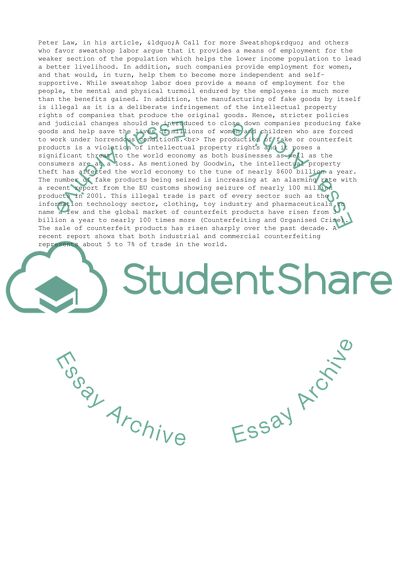Cite this document
(“Manufacture and Sale of Counterfeit Goods Essay”, n.d.)
Manufacture and Sale of Counterfeit Goods Essay. Retrieved from https://studentshare.org/business/1567107-manufacture-and-sale-of-counterfeit-goods
Manufacture and Sale of Counterfeit Goods Essay. Retrieved from https://studentshare.org/business/1567107-manufacture-and-sale-of-counterfeit-goods
(Manufacture and Sale of Counterfeit Goods Essay)
Manufacture and Sale of Counterfeit Goods Essay. https://studentshare.org/business/1567107-manufacture-and-sale-of-counterfeit-goods.
Manufacture and Sale of Counterfeit Goods Essay. https://studentshare.org/business/1567107-manufacture-and-sale-of-counterfeit-goods.
“Manufacture and Sale of Counterfeit Goods Essay”, n.d. https://studentshare.org/business/1567107-manufacture-and-sale-of-counterfeit-goods.


